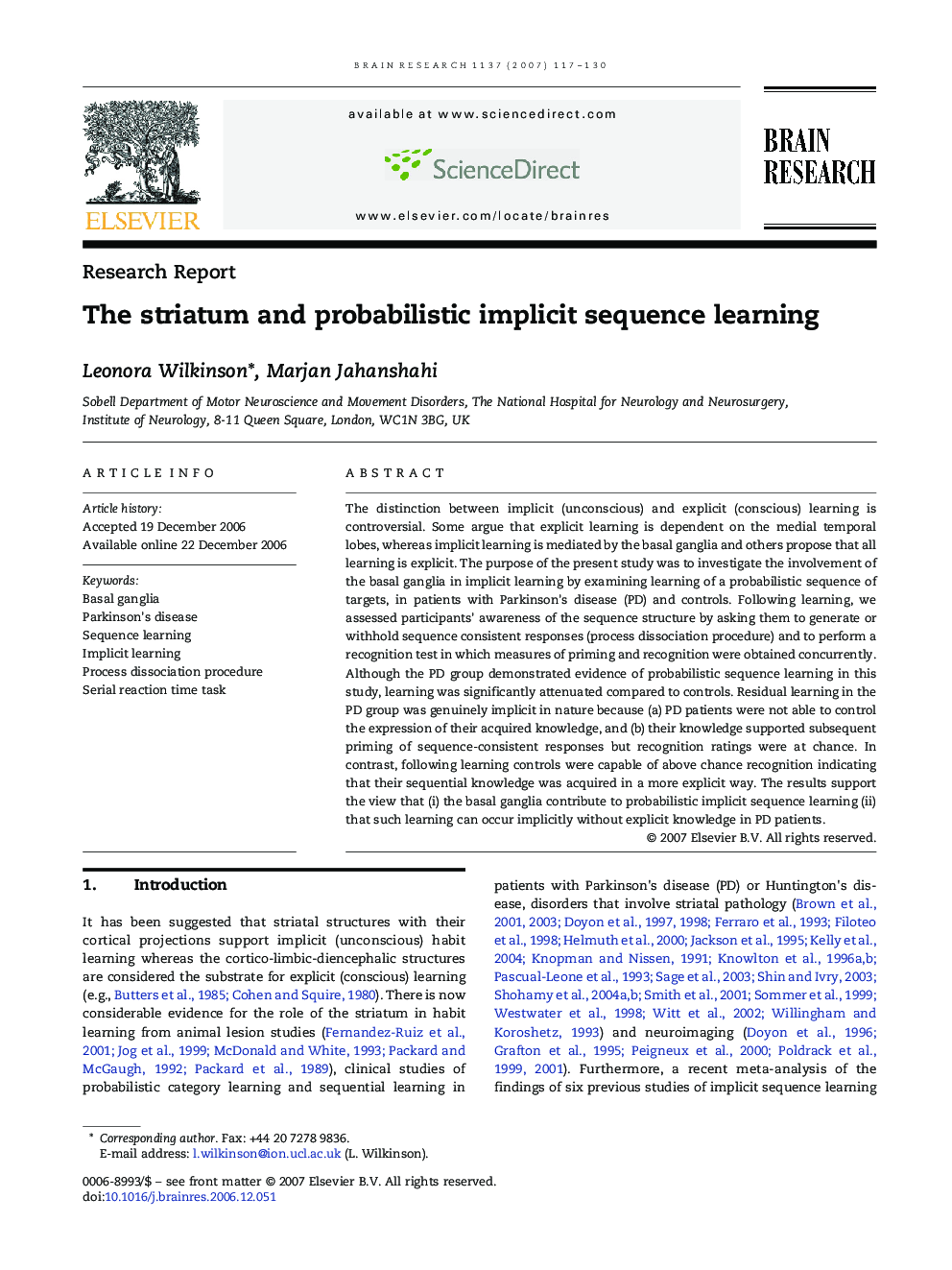| Article ID | Journal | Published Year | Pages | File Type |
|---|---|---|---|---|
| 4331510 | Brain Research | 2007 | 14 Pages |
The distinction between implicit (unconscious) and explicit (conscious) learning is controversial. Some argue that explicit learning is dependent on the medial temporal lobes, whereas implicit learning is mediated by the basal ganglia and others propose that all learning is explicit. The purpose of the present study was to investigate the involvement of the basal ganglia in implicit learning by examining learning of a probabilistic sequence of targets, in patients with Parkinson's disease (PD) and controls. Following learning, we assessed participants' awareness of the sequence structure by asking them to generate or withhold sequence consistent responses (process dissociation procedure) and to perform a recognition test in which measures of priming and recognition were obtained concurrently. Although the PD group demonstrated evidence of probabilistic sequence learning in this study, learning was significantly attenuated compared to controls. Residual learning in the PD group was genuinely implicit in nature because (a) PD patients were not able to control the expression of their acquired knowledge, and (b) their knowledge supported subsequent priming of sequence-consistent responses but recognition ratings were at chance. In contrast, following learning controls were capable of above chance recognition indicating that their sequential knowledge was acquired in a more explicit way. The results support the view that (i) the basal ganglia contribute to probabilistic implicit sequence learning (ii) that such learning can occur implicitly without explicit knowledge in PD patients.
